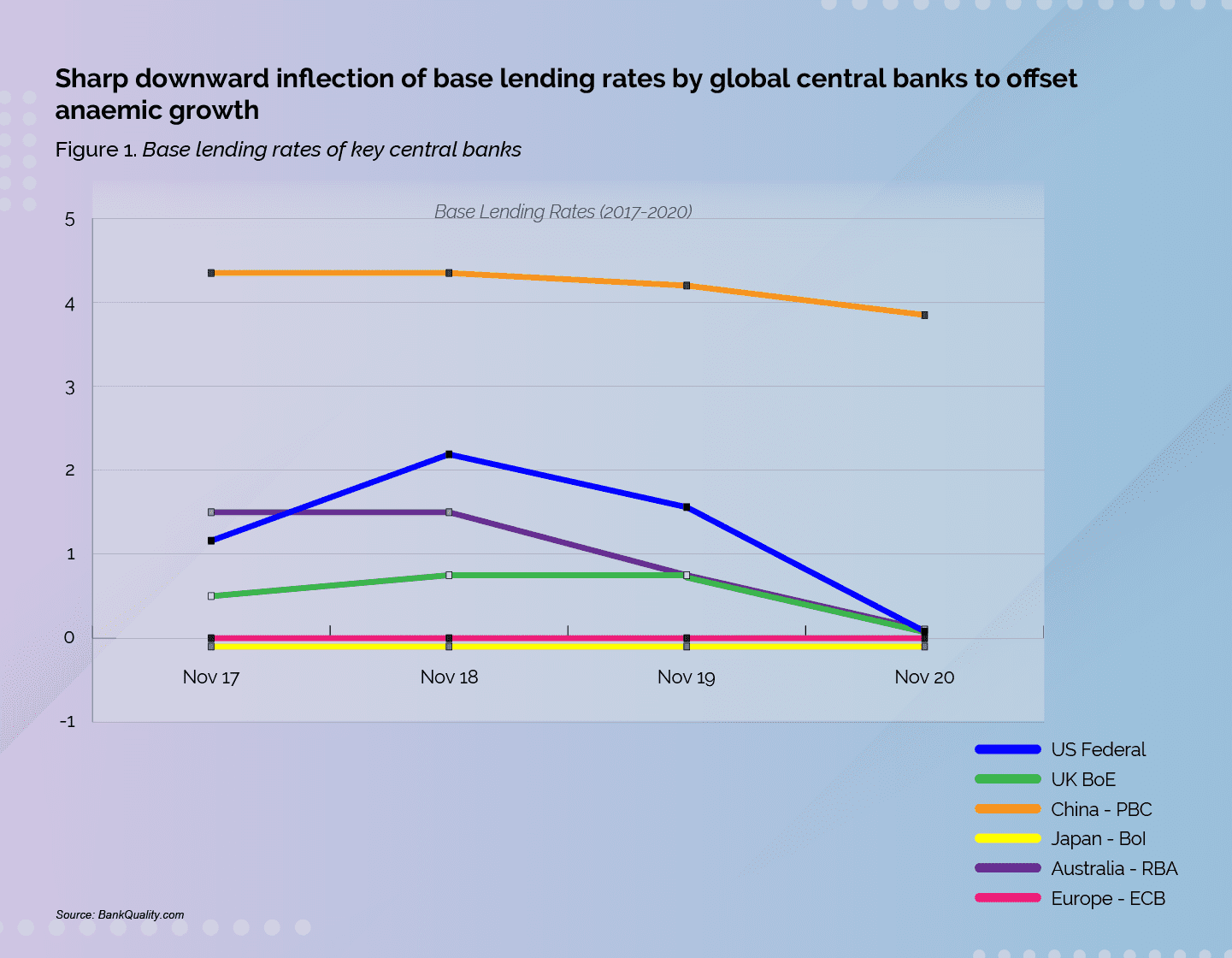- Investor appetite for China’s negative yield bonds is a capital preservation play
- Implications for corporates and FIs in the region are marginal
- Global liquidity keeping key asset classes artificially afloat
The recent issuance of EUR 750 million ($900 million) worth of five-year Chinese government bonds at -0.152% is a new milestone reached following China’s return to international debt markets. Record low interest rates have been especially advantageous for sovereign issuers including China that are looking to take advantage of the lower costs of capital via new bond issuance or debt refinancing. The negative yield pricing has also excited foreign institutional investors struggling to realise portfolio return enhancement albeit lower real yields when factoring inflation. The existing low-interest rate environment, weaker global economic fundamentals induced by the COVID-19 pandemic and geo-political realignments has made hard-pressed asset managers to rethink their yield pick-up strategies.
Investor appetite for China’s negative yield bonds is a capital preservation play
The strong order book of the five-year note is testament of investor readiness to pay for the honour of lending as the Chinese government quietly diversifies its foreign exchange holdings while also gradually loosening its own exposure to US dollar denominated debt as well as investment in US treasuries. Investors either expect further central bank action (see Figure 1) that will continue to drive yields downward and/or are more optimistic of China’s short to medium term economic outlook as the rates offered by the country’s sovereigns remain more competitive. More importantly, China itself is well positioned to realise arbitrage opportunities irrespective of whether the Euro strengthens or weakens as renminbi adjustments can be made during the redemption period.

Intriguingly, these negative yielded bonds have validated investor caution and concern during the current period of market uncertainty and stress caused by structural economic weaknesses accentuated by prolonged lockdowns. The flight to safety increasingly includes Chinese assets as the country is the only major world economy not to contract in 2020 while projected to record its annual weakest growth since 1976. European institutional investors in particular have been quick to acquire these sovereign notes driven in part due to costlier alternatives and desire for exposure to Chinese assets. Current yields on European sovereigns are ranging between -0.5% and -0.75% far lower than what is on offer to investors from comparable Chinese issues providing an added incentive for capital preservation.
Implications for corporates and FIs in the region are marginal
Interestingly, the negative sovereign bond yields development for Chinese corporates seeking diversified funding is likely to be negligible. Ivan Chung, associate managing director at Moody’s Investors Service attributes this to the “offshore Euro market that very few Chinese corporates tap,” observing that “it is an insignificant source of funding for Chinese corporates. It has a limited impact on Chinese corporates who rely mainly on the onshore market, and to some extent offshore US dollar market.”

Ivan Chung,
Associate managing director at Moody’s Investors Service

Alicia Garcia-Herrero,
Chief economist – APAC,
Natixis
While Chinese companies continue to explore offshore markets for debt raising activities it is its onshore bond market that remains its preferred and primary source of funding. A variety of factors including interest rates, liquidity and structural considerations can be credited for this in conjunction with domestic and foreign institutional investor appetite that is driving the growth of one of the largest bond markets in the world.
Similarly, for financial institutions (FIs), Alicia Garcia-Herrero, chief economist – APAC at Natixis remarked, “It is really all about your expectation of the euro-dollar cross currency swap so not necessarily a problem for banks.” From a margins perspective the persistently low interest rates continue to have an adverse impact on banks specifically on net-interest margins (NIM) that continue to shrink. “As rates are all part of a pecking order in risk ratings, such low sovereign yields will lead to corporates demanding cheaper funding too. Over time, this will hurt banks’ NIMs as yields on loans and bonds generally decline, but not necessarily in the same magnitude as the decline in rates,” explained Syed Razif Al-Idid, head of CIMB Private Banking Singapore.

Syed Razif Al-Idid,
Head of CIMB Private Banking Singapore
Effective treasury management will require application of prudent hedging strategies that will mitigate exposures to financing and deposit products. Al-Idid added, “One of the positive benefits of low/zero rates in a recession/low growth environment is to reduce the amount of non-performing loans. It is better to have a loan restructured as banks help borrowers (corporate and individuals) to tide over tough cash flow periods yet keep them as performing loans, eking out some profits and gain positive reputation and trust with clients.” Most large Chinese banks today tend to have relatively diversified asset portfolios with significant reliance on fee-based business. Garcia-Herrero opined that “Chinese banks are still privileged compared to Japanese or European as Shanghai interbank offered rate (SHIBOR) remains above 3%.”
Global liquidity keeping key asset classes artificially afloat
The large stimulus programmes being administered by key central banks in various jurisdictions continues to prop up financial markets that increasingly look mispriced and primed for sharp corrections. Arguably the “methadone” type liquidity injections have also spurred inflated equity prices that defy conventional thinking on market valuations. Institutional investors recognise the inherent market risks with exposure to equities in developed markets and are likely recalibrating their own portfolios through allocation to negative yielding bonds such as the recently issued 5-year Chinese sovereign.
The desire for higher yields will continue to motivate sophisticated investors that are keen to have China onshore bond market exposure. Negative yield trends are no longer a deterrence as investors weigh in other “less-bad” options and are open to paying more upfront for holding debt. While global sub-zero debt currently stands around $17 trillion it is likely that sovereigns including China will continue to seek this as a low-cost source of funding. For investors the bet is that rates will stay low in the short to medium term with any adverse upward rate movement likely to lead to capital erosion. For both sovereign and corporates alike the marginal yield advantage offered by Chinese entities today makes it extremely attractive for investors enabling issuers to reasonably achieve their targeted funding requirements.

































